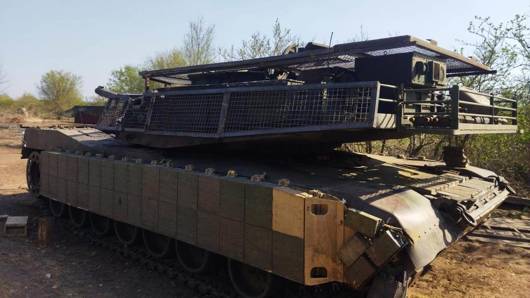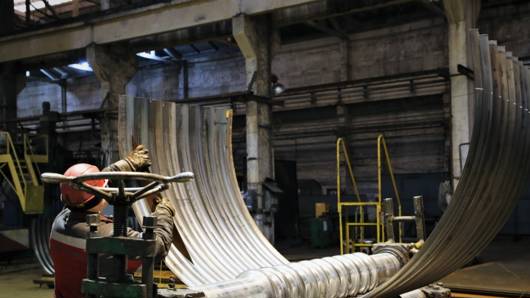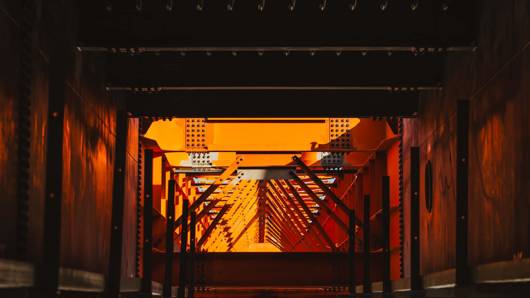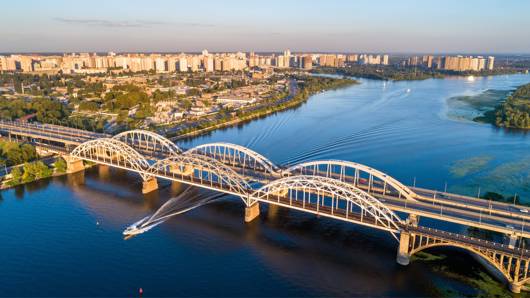Chornobyl is a tragedy on pause. Thirty-nine years ago, nearly 240,000 people heroically stopped it at its inception. In all, more than 600,000 people took part in the cleanup operations after the disaster. In 2019, Metinvest’s steel helped shield the world from hazardous radiation. However, the Safe Confinement was later damaged by a Russian drone during the full-scale war. Read on to explore the history of the Confinement, the consequences of the strike, and the current situation around reactor #4.
No one was prepared for the events of 1986. That’s why building the first sarcophagus over the fourth power unit of the Chornobyl Nuclear Power Plant in a record 206 days seems nothing short of a miracle. The structure was designed to last 20-40 years. By the mid-1990s, it became clear that the protective structure was slowly deteriorating under the impact of radiation. A new solution had to be found. In 2004, the European Bank for Reconstruction and Development launched a tender for the design and construction of a new sarcophagus.
Forty donor countries joined the effort to develop and fund the project. Construction was entrusted to a French consortium called NOVARKA. The new structure was designed to encase the old sarcophagus, shielding it from environmental impact and containing radioactive materials. The material of choice was steel – sourced from Metinvest.
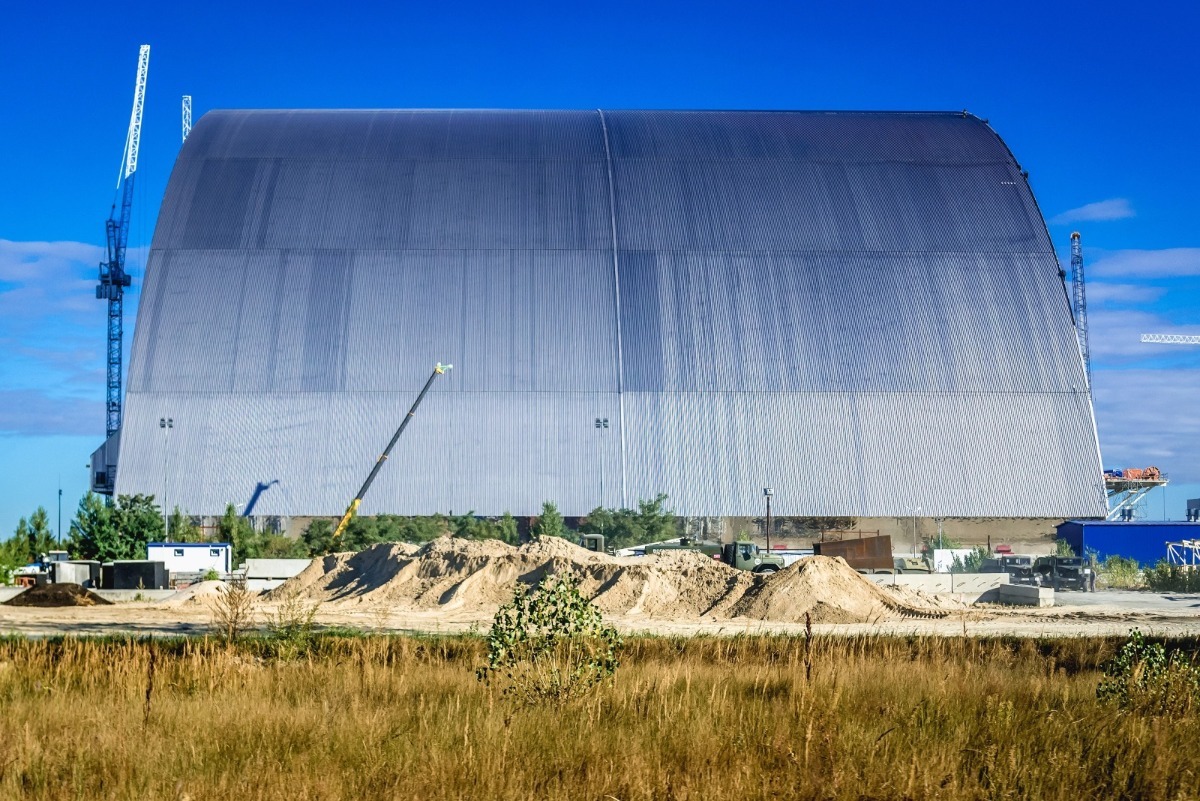
CONSTRUCTION
Steelmakers rose to the occasion. Azovstal specialists developed and delivered 2,000 tonnes of special steel with enhanced impact toughness and resistance to aggressive environments. The Italian construction company CIMOLAI, a special contractor for NOVARKA, sourced another 13,300 tonnes of steel from Metinvest Trametal.
The choice of steel for the sarcophagus was one of the most crucial moments, as the structure had to perform flawlessly, providing protection against radiation. History had never seen a more important tender for steel – no ship, car, or aircraft had ever required such careful material selection, because this was about the safety and lives of millions.
— Yuriy RYZHENKOV, CEO of Metinvest GroupPreparatory work started in 2010. While builders cleared and prepared the assembly site, Italian specialists pre-assembled the first structures of the behemoth facility. According to the architects' design, the New Safe Confinement measured 165 metres in length, 258 metres in width, and 108 metres in height. It took 18 vessels and 2,500 trucks to deliver all of its elements to Ukraine.
Construction of the second shelter began in November 2012. Nearly 3,000 specialists worked at the site throughout all stages. Since working above the reactor was unsafe, the arch was built away from it and then slid over the old sarcophagus using rails once completed.
As it turned out, the Confinement was a timely and correct decision, as several protective slabs collapsed above the engine room of the power unit in February 2013. Fortunately, no major leak of radiation occurred, and the largest moveable structure in modern history was successfully installed.

FINISHING STROKES
The following three years saw a complex process of setting up all systems and training the confinement's staff. In April 2019, the new sarcophagus was successfully tested, and on 10 July, it was inaugurated for operation, designed to last at least 70 years. Within a few months, it became clear that the structure was worth every euro of the 1.5 billion invested in its construction, as over this period,the radiation level decreased tenfold, both near the old sarcophagus and outside the New Safe Confinement.
NUMBERS AND FACTS
The NSC structure can withstand a six-point earthquake, temperature variations from -43 to +45°C, and a Class 3 tornado with wind speeds between 70 and 93 m/s.
The arch stands 108 metres high, equivalent to a 35-storey building, and covers an area equal to 12 football fields. The Egyptian Red Pyramid, several Leaning Towers of Pisa, or the entire Notre-Dame de Paris could easily fit beneath its dome.
The construction of Shelter-2 required 25,000 tonnes of steel structures, and together with all the equipment, it weighs 36,000 tonnes. To put it into perspective, this amount of steel would be enough for three Eiffel Towers. Notably, more than half of the steel was produced by Metinvest's facilities.
Over 55,000 cubic metres of solid radioactive waste were removed from the site to prepare for construction.
Of the 3,000 people who built the arch, 2,000 were Ukrainians. Moreover, half of them were constantly on-site.
During the experiment, one of the NSC’s compressors failed, causing the pressure on the roof to reach 24 kilonewtons (2,447.32 kg). However, the structure held firm, despite being designed for only 10 kN.
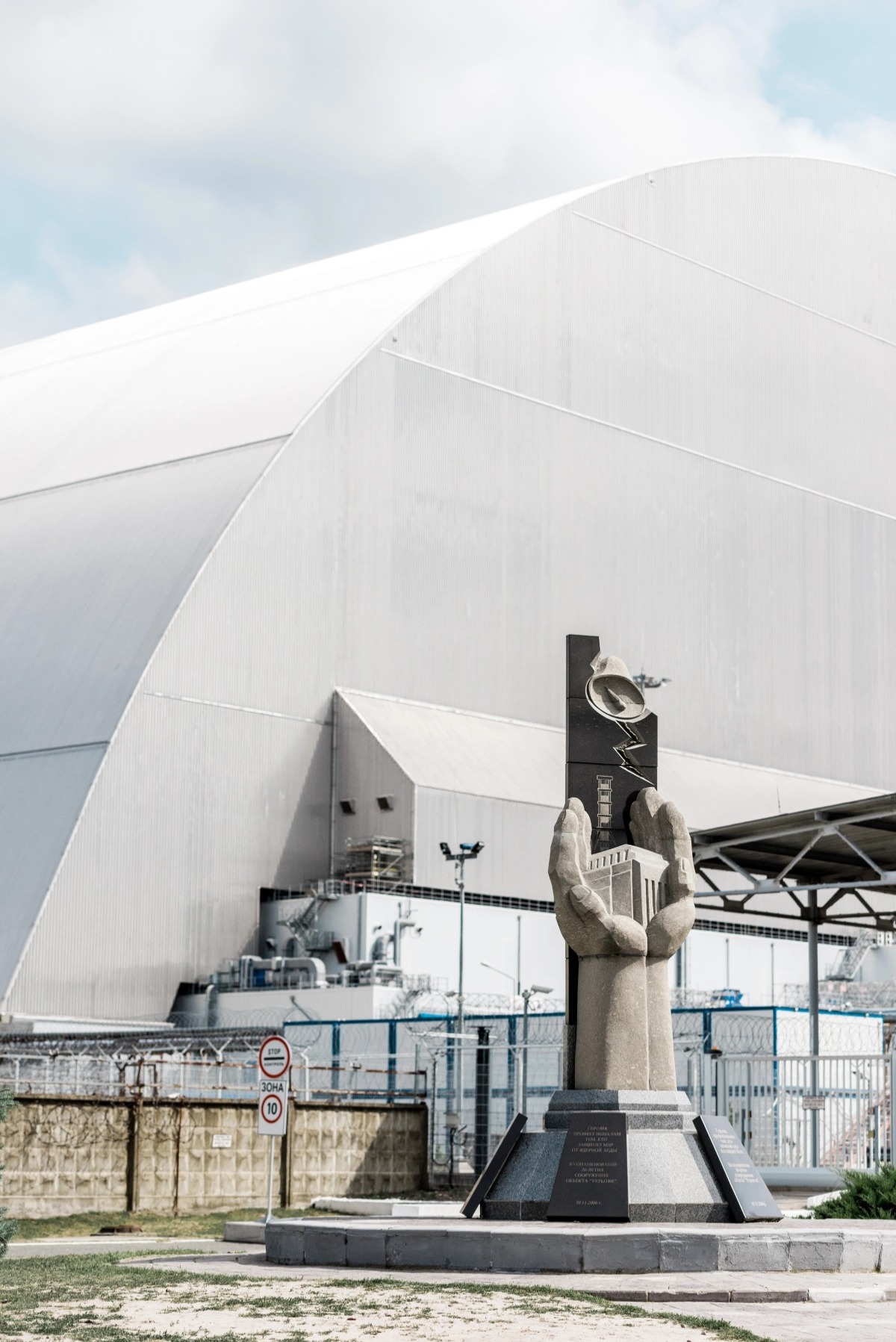
HANGING IN BALANCE
In 2022, the Exclusion Zone became one of the first territories occupied by Russia. On 24 February, a Russian convoy broke through the Paryshiv road block, raising tonnes of radioactive dust into the air. Soon after, at 15:30, it blocked the administrative and amenity buildings at the Chornobyl Nuclear Power Plant. The 178 Ukrainian soldiers on-site were forced to lay down their weapons, as any hostilities at the facility could have caused irreparable damage.
For the next month, the world was repeatedly on the brink of a radiation disaster. As a result of the occupiers' actions, the plant was de-energised, jeopardising the control of safety systems. The constant movement of vehicles and attempts to dig in the Red Forest caused the radiation levels on the surface to rise to 3 milliroentgens, which is 100 times higher than the sanitary norm.
These Russian forces came and started digging. They exposed everything that had been buried. If they weren’t occupiers, I would have said, 'Poor people.
— Volodymyr OLEKSIIENKO, head of the Chornobyl Cultural and Information CentreEventually, plutonium won in the standoff with the Russians: the occupiers withdrew, the world breathed a sigh of relief, andon 3 April, the Ukrainian flag was once again raised against the backdrop of the steel confinement.
A CRIME AGAINST HUMANITY
On 14 February 2025, the news media were shaken by devastating news: during another shelling, a Russian drone with an explosive warhead damaged the steel sarcophagus.
One can only imagine what might have happened if the fire had reached the reactor. After all, it still holds 200 tonnes of nuclear fuel residues, 43,000 cubic metres of highly radioactive waste, and 4 tonnes of radioactive dust. Fortunately, Metinvest's steel performed its task – though not in the way the creators of the confinement had originally envisioned.
WHAT IS NEXT?
The firefighting efforts were complicated by the fact that the pressure inside the confinement was much lower than atmospheric pressure. This ensured that in case of damage, radioactive particles would stay inside, minimising the impact on the environment. The same occurred with the fire: during depressurisation, it was drawn inside, and some areas smouldered until 25 February.
According to experts, the radiation background did not change significantly after the event. However, the security issue remains unresolved. This situation has once again proven that Russia's aggression is not only destroying Ukrainian cities every day, but also poses a real threat to the security of Europe as a whole.







